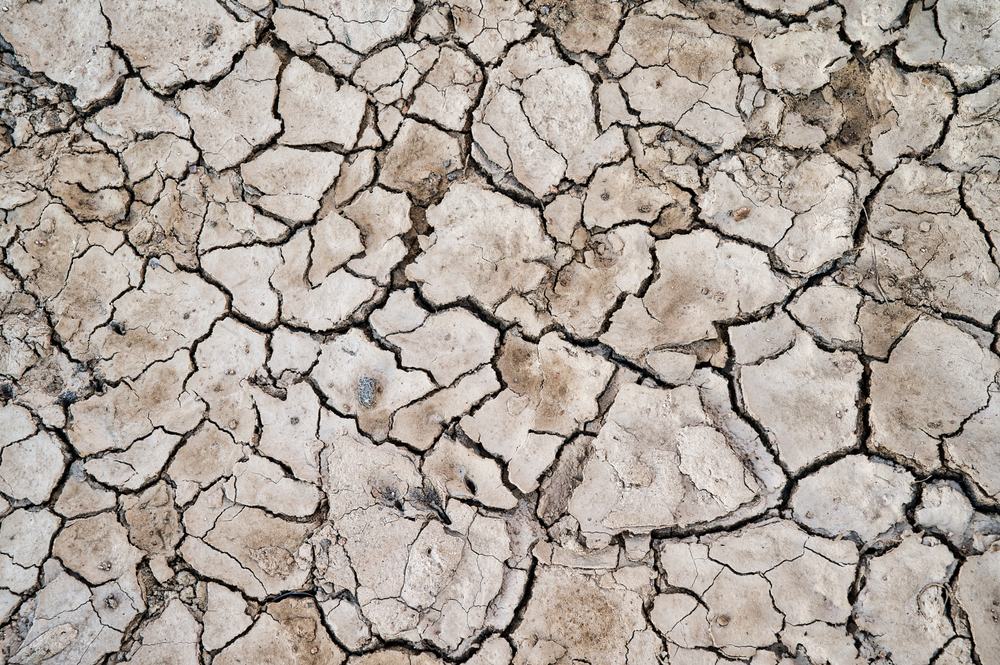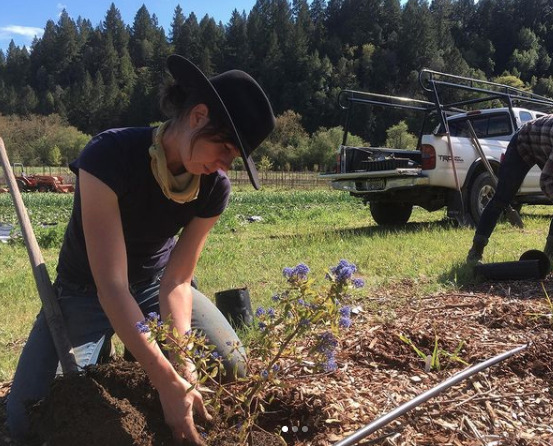As water sources dry up, farmers are culling herds, stripping trees of fruit and forgoing planting crops this year.

Due to the worsening drought sweeping across the West, Sonoma County farmers David and Kayta Plescia were forced to cancel their vegetable CSA program. The couple, who run Green Valley Community Farm in Sebastopol, says they simply didn’t have enough water to plant the necessary vegetables this year.
“We got a third of the usual rainfall [during the rainy season] and that was after last year, which was also very low,” says David. “The two combined did a number on people’s water sources.”
The farm’s catchment pond, their irrigation source, didn’t fill with water this year. “That’s the first time it’s ever happened,” he says. “We have one-twentieth of the water we usually have.”
Farmers of all kinds are being forced to make similarly tough decisions as water supplies dwindle. Ranchers are trying to stay ahead of the curve by culling their herds. Apple growers are dropping fruit on young trees in an attempt to keep them alive. Almond and peach growers are doing the same.
According to the most recent US Drought Monitor report, 96 percent of the West is suffering from at least some level of drought. California and Nevada are now 100 percent in drought after two years of exceptionally dry conditions. Reservoir levels in both states are dismally low, intensifying the concern for wildfire season, which runs between May and October. Already, there have been more fires and acres burned in California than this time last year.
Farmers in other states are affected too. In January, New Mexico officials warned farmers and ranchers who rely on water from the Rio Grande and other rivers to prepare to go without it this year, recommending “that farmers along the Rio Chama and in the Middle Valley that don’t absolutely need to farm this year, do not farm.” Utah irrigation water providers are implementing increased fines for overuse. And in Idaho, which isn’t faring as badly as other states, farmers in central and southern counties are preparing for crop disaster losses.
Conditions are especially dire in California, where 41 of 58 counties are under a drought state of emergency. This year’s drought is similar to years past, with one caveat, says Dan Sumner, UC Davis professor of agricultural and resource economics and director of the UC Agricultural Issues Center. “Sonoma County has been hit more this time,” he says, “and that is less common.”
It’s also affecting the farm counties of the Central Valley, home to some of California’s richest agricultural land, where farmers have long relied on water from the US Bureau of Reclamation’s Central Valley Project (CVP) for irrigation. Last week, the bureau cut allocations for some farmers to zero.

Kayta Plescia says there isn’t enough water to plant the necessary vegetables for her farm’s CSA this year. Photo courtesy Green Valley Community Farm.
“Water is very hard to come by,” says Vincent Ricchiuti, chief operations officer for P-R Farms and Enzo Olive Oil in Fresno, California. “This year is drastically worse [than last year].”
The persistent droughts led Ricchiuti to install a new system called AgMonitor in 2015. The technology takes into account the weather, age of tree and type of soil, and uses additional data from probes that measure soil moisture to determine how much water to distribute. “The goal is not to overwater or underwater,” he says. “It’s to really zero in on irrigation.” That helps a limited water supply last longer.
Ricchiuti says the droughts mean farmers have to be more conscious about what they’re planting and where they’re planting it. At Green Valley Community Farm, the Plescias have applied for a cannabis permit, which would allow them to grow a crop that requires much less water. They’re also considering moving their vegetable farm.
“The site that we’re on is untenable for a vegetable farm business, we’ve realized,” says David, who says he’s eyeing another location that has a more reliable water supply. As renters, the Plescias have more flexibility than landowners, some of whom operate on family farms that have run on the same land for several generations.
California’s recurring drought and wildfire conditions led fiber artist and farmer Leslie Adkins to relocate her Heartfelt Fiber Farm. Last year, as the wildfires ravaged Sonoma and Napa counties, she made the difficult decision to move her small flock of sheep, goats and alpaca from California to Illinois.
“We were originally thinking of Oregon or Washington, but the writing on the wall in the West, with the megadrought, has been there for a while,” says Adkins, who has a graduate degree in environmental studies. “My family decided we needed to go somewhere, somewhere where we could start over, maybe on a smaller scale, that would be less affected farming-wise by this climate change that’s everywhere.”
Adkins believes we’ll continue to see more farmers become climate refugees as droughts and rising temperatures persist. “I just reached my own personal conclusion, and I’m an optimist by nature, but I have concluded that there’s not a future for farming in California,” she says.
UC Davis’ Sumner says it’s not time to worry just yet. “It could become more severe, but that is a few years away,” he says. “Droughts in California have been part of agriculture for a very long time…California is a wonderful place for many crops and that has not changed at all.”
This is a culmination of generations of treating water as a never-ending resource. Paving over critical recharge zones, channelizing riparian corridors, irrigating ornamental landscapes like lawns, over irrigation of farm crops, and overall sending water to the ocean instead of slowing it, spreading it, and sinking it. Its not complicated, we just need the will, both politically and culturally.
This is what happens when millions and millions of people move to desert areas. Drought and wildfires in the west are nothing new, folks. If people are blindsided by these things after them happening for millennia, then I really can’t feel sorry for them. Ignorance is no excuse.
For land that isn’t in a drought ‘zone’ ; try northern Canada!
How ’bout notpoopin’ in the water? Hey Otis: Reservoirs? Great. I love evaporation. How ’bout rain collection in barrels & cisterns? How ’bout drip irrigation? How ’bout hydroponics? How ’bout urban agriculture and veritcal farming? Anybody read Jared Diamond? Most Australians and South Africans will soon be “drought refugees” – Welcome your new neighbors! Cheers, Bobby
CA can only blame themselves for their drought problems. Thanks to NIMBY, no new reservoirs have been built in many years. A LOT of water that could help farmers and people in general goes to support fish instead.
Golly, there’s drought in the Far West? How totally unprecedented. I mean, these farmers had absolutely no warning and were blindsided. Hey, maybe they can get a federal bail-out!